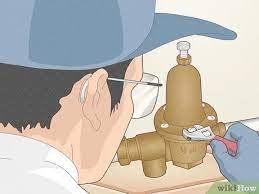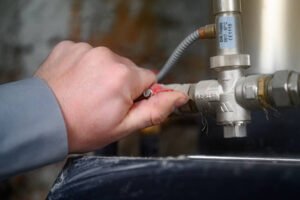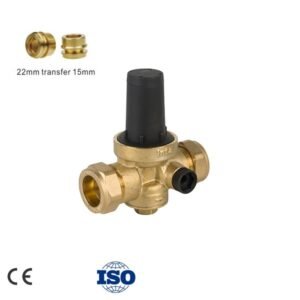Pressure control valves serve as critical components in numerous industrial applications, ensuring the smooth operation and safety of systems handling fluids under varying pressures. Despite their pivotal role, these valves are not without limitations. Understanding the drawbacks associated with pressure control valves is essential for engineers, operators, and decision-makers to make informed choices regarding their implementation and management. In this article, we delve deeper into the limitations of pressure control valves, shedding light on the challenges they pose and potential strategies for mitigation.
1. Non-linear Behavior:
One significant limitation of pressure control valves is their inherent non-linear behavior. Traditional valve designs often exhibit nonlinear responses to changes in input signals, leading to complexities in control and calibration. This nonlinearity can result in challenges when attempting to achieve precise pressure regulation, especially in systems where strict adherence to pressure setpoints is crucial. Engineers must account for these nonlinearities during valve selection and control system design to achieve the desired performance.
2. Hysteresis:
Hysteresis refers to the phenomenon where the response of a system depends not only on its current state but also on its history. In pressure control valves, hysteresis can manifest as discrepancies between the valve’s opening and closing pressures, leading to inaccuracies in pressure regulation. This phenomenon complicates control algorithms and can hinder the ability to maintain stable and consistent pressure levels, particularly in applications requiring rapid and precise adjustments. Employing advanced control strategies and valve designs that minimize hysteresis can help mitigate this limitation.
3. Limited Flow Range:
Pressure control valves often have a limited range of flow rates over which they can effectively regulate pressure. Operating outside of this range may result in reduced control accuracy or even complete loss of control, compromising the performance and safety of the system. Engineers must carefully consider the expected operating conditions and flow requirements when selecting pressure control valves to ensure they operate within their specified flow range. In some cases, employing multiple valves in parallel or using valve sizing techniques can extend the effective operating range of the system.
4. Sensitivity to Operating Conditions:
Pressure control valves can be sensitive to changes in operating conditions, such as variations in fluid viscosity, temperature, or pressure. These factors can affect the valve’s performance and may necessitate adjustments to control parameters or valve settings. In dynamic systems with fluctuating operating conditions, maintaining optimal valve performance can be challenging and may require continuous monitoring and tuning. Employing robust control algorithms and adaptive control strategies can help mitigate the impact of changing operating conditions on valve performance.
5. Mechanical Wear and Degradation:
Like all mechanical components, pressure control valves are subject to wear and degradation over time, which can affect their performance and reliability. Factors such as friction, erosion, and corrosion can contribute to valve degradation, leading to leaks, reduced flow capacity, or valve failure. Implementing regular maintenance and inspection protocols is essential for detecting and addressing potential issues before they escalate. Additionally, selecting valves constructed from durable materials and employing protective coatings can prolong their lifespan and mitigate mechanical degradation.
Conclusion:
While pressure control valves are indispensable components in many industrial systems, they are not without limitations. Engineers and operators must be aware of these limitations and take appropriate measures to mitigate their impact on system performance and reliability. By understanding the non-linear behavior, hysteresis, limited flow range, sensitivity to operating conditions, and mechanical wear associated with pressure control valves, stakeholders can make informed decisions regarding valve selection, control strategies, and maintenance practices. Addressing these limitations through innovative technologies, advanced control algorithms, and proactive maintenance can enhance the efficiency and effectiveness of pressure control systems.
Exploring the Limitations of Pressure Control Valves
Pressure control valves serve as critical components in numerous industrial applications, ensuring the smooth operation and safety of systems handling fluids under varying pressures. Despite their pivotal role, these valves are not without limitations. Understanding the drawbacks associated with pressure control valves is essential for engineers, operators, and decision-makers to make informed choices regarding their implementation and management. In this article, we delve deeper into the limitations of pressure control valves, shedding light on the challenges they pose and potential strategies for mitigation.
1. Non-linear Behavior:
One significant limitation of pressure control valves is their inherent non-linear behavior. Traditional valve designs often exhibit nonlinear responses to changes in input signals, leading to complexities in control and calibration. This nonlinearity can result in challenges when attempting to achieve precise pressure regulation, especially in systems where strict adherence to pressure setpoints is crucial. Engineers must account for these nonlinearities during valve selection and control system design to achieve the desired performance.
2. Hysteresis:
Hysteresis refers to the phenomenon where the response of a system depends not only on its current state but also on its history. In pressure control valves, hysteresis can manifest as discrepancies between the valve’s opening and closing pressures, leading to inaccuracies in pressure regulation. This phenomenon complicates control algorithms and can hinder the ability to maintain stable and consistent pressure levels, particularly in applications requiring rapid and precise adjustments. Employing advanced control strategies and valve designs that minimize hysteresis can help mitigate this limitation.
3. Limited Flow Range:
Pressure control valves often have a limited range of flow rates over which they can effectively regulate pressure. Operating outside of this range may result in reduced control accuracy or even complete loss of control, compromising the performance and safety of the system. Engineers must carefully consider the expected operating conditions and flow requirements when selecting pressure control valves to ensure they operate within their specified flow range. In some cases, employing multiple valves in parallel or using valve sizing techniques can extend the effective operating range of the system.
4. Sensitivity to Operating Conditions:
Pressure control valves can be sensitive to changes in operating conditions, such as variations in fluid viscosity, temperature, or pressure. These factors can affect the valve’s performance and may necessitate adjustments to control parameters or valve settings. In dynamic systems with fluctuating operating conditions, maintaining optimal valve performance can be challenging and may require continuous monitoring and tuning. Employing robust control algorithms and adaptive control strategies can help mitigate the impact of changing operating conditions on valve performance.
5. Mechanical Wear and Degradation:
Like all mechanical components, pressure control valves are subject to wear and degradation over time, which can affect their performance and reliability. Factors such as friction, erosion, and corrosion can contribute to valve degradation, leading to leaks, reduced flow capacity, or valve failure. Implementing regular maintenance and inspection protocols is essential for detecting and addressing potential issues before they escalate. Additionally, selecting valves constructed from durable materials and employing protective coatings can prolong their lifespan and mitigate mechanical degradation.
Conclusion:
While pressure control valves are indispensable components in many industrial systems, they are not without limitations. Engineers and operators must be aware of these limitations and take appropriate measures to mitigate their impact on system performance and reliability. By understanding the non-linear behavior, hysteresis, limited flow range, sensitivity to operating conditions, and mechanical wear associated with pressure control valves, stakeholders can make informed decisions regarding valve selection, control strategies, and maintenance practices. Addressing these limitations through innovative technologies, advanced control algorithms, and proactive maintenance can enhance the efficiency and effectiveness of pressure control systems.






